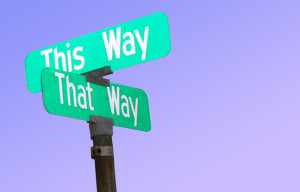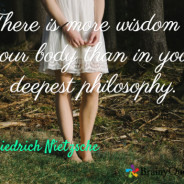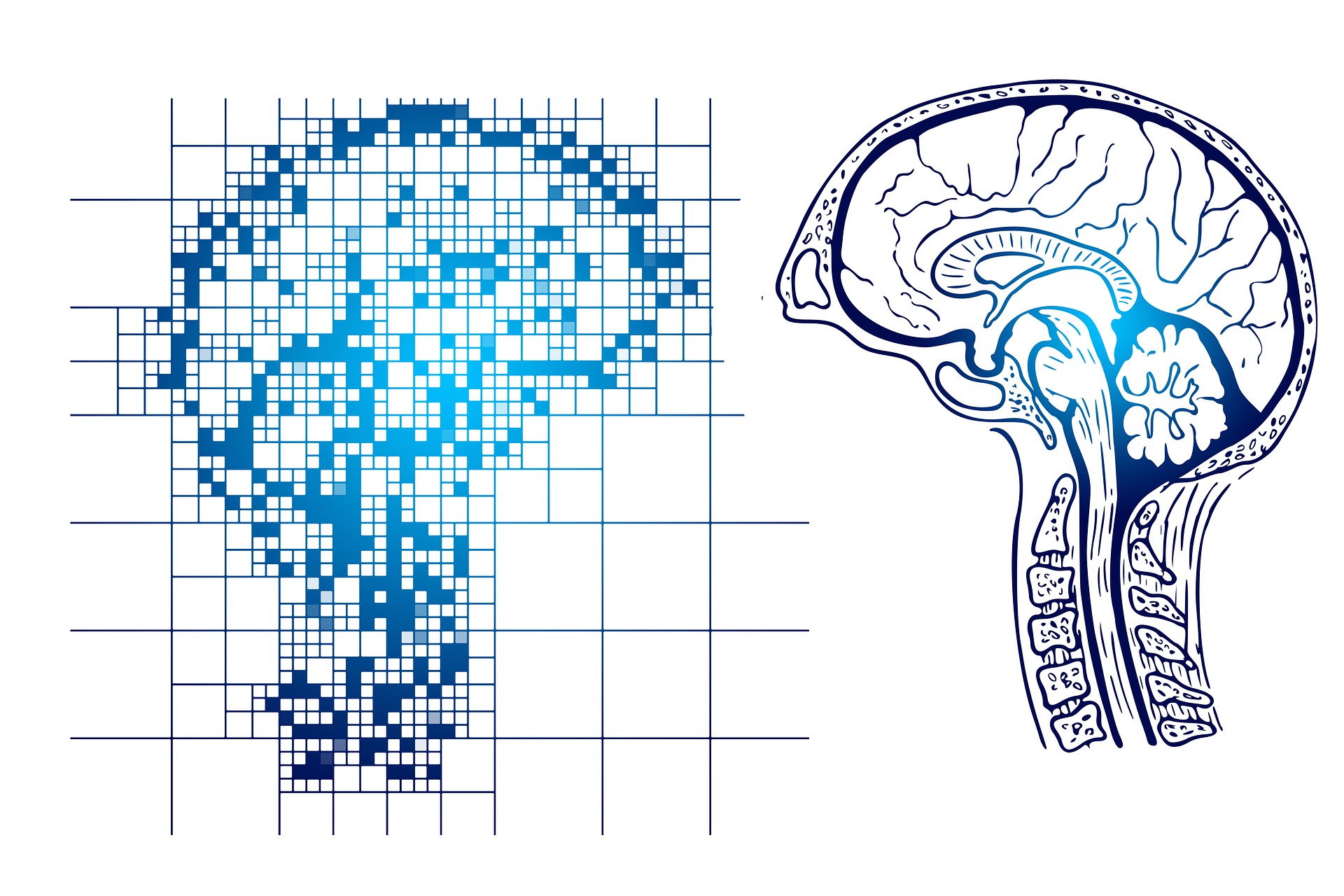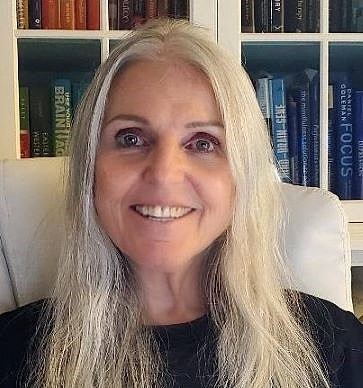Surviving the Fires – Emotional Changes
Are you a survivor of the forest fires ravaging Ventura county and moving into Santa Barbara county, California? What emotional changes are normal at this point in the fires and what can you do to gain your balance back as quickly as possible?
If so, this information is for you, written as a psychologist. That said, I took notes as I went through it myself this week, evacuating as I saw the flames not far from my home. I will break my notes down into shorter pieces to post here.
As I write this, one week after it began, I see smoke and haze out every window, and have a new air filter machine humming in the background. This has really helped the air quality inside.
It’s Surreal
Feeling or experiencing what many are calling surreal is not the psychological term, that describes art. Instead, we break down mental, physical and emotional sensations and experiences into the terms depersonalization and derealization.
The first describes how you feel as a person or inside of yourself, and the second describes how you are experiencing your environment or surroundings. If you are feeling this way, read more details about it here https://www.mayoclinic.org/diseases-conditions/depersonalization-derealization-disorder/symptoms-causes/syc-20352911, but understand that momentary sensations of depersonalization and derealization when faced with a trauma like a firestorm down the block is NOT something to worry about. Nor is high anxiety, as long as you can still keep moving and getting out of harm’s way. All of these feelings are understandable under the circumstances. And they should go away on their own. If you are an anxious person normally, take that into consideration and try some of my suggestion below.
A traumatic experience, by definition, is outside of normality. It takes your brain some time to decipher, categorize and encode what’s going on. This can feel very strange as it’s occurring and unfolding. The feelings can last for seconds or minutes or longer. They can come and go throughout the coming days as you process what is occurring and how things are changing in your life and surroundings or those of someone close to you.
Certainly some, more than others, of the people affected by the sudden or fast-moving forest fires, are experiencing a trauma unfolding before them and feeling the changes within themselves. Receiving the “extreme emergency evacuate now” texts can send terror through the body and mind. Some people are given no chance to get their pets much less important items. And I heard some people interviewed on the news say that they knew their house was burning when they saw it on the news. That’s traumatic too, as is going to your lot after the fact. Don’t go alone and don’t stay longer than you can handle it. There is nothing gained by that.
What not to Do
Please don’t worry about the odd feelings you may be having. This is the time for patience with yourself and loved ones. Ground yourself by focusing on your feet and feel them on the ground and the chair you are sitting on. If feelings of depersonalization or derealization stay with you for days and don’t relent, then call a psychologist or psychiatrist for an evaluation.
Don’t avoid sleeping and resting. Take it easy on yourself. Stress is exhausting when it’s traumatic and sudden and overwhelming. There are OTC supplements, teas and herbs that can help you sleep better. Emergen-C makes Emergen-zzzzzzz, with melatonin for sleep, magnesium to calm anxiety, other vitamins, and C, that helps your immune system.
Poor air quality and stressful times eat away at your natural healing system, your immune system, so help it by sleeping enough and eating healthy foods, avoiding low quality carbs, sugars, and too much alcohol or overuse of prescription drugs for numbing and calming.
What to Do
Your best bet right now is to put yourself in the company of people who care about you and will stay with you at least until the crisis passes. Lean on them, letting them help you.
It will help you to take action as you can through the coming hours and days, doing whatever normally helps you relax or at the least, takes your mind somewhere else specifically. For example, making something simple with an art or craft or food. While doing this, feel the substances in your hands, take in the smells, colors, and textures. Look at what you are making as you are making it. Or dance to music, exercise or do yoga (inside locations while the air is bad) and feel every part of your body move on the ground beneath you, listen to your breathing and sing along to the music if you can. Pay attention to what you are doing in the same moments you are doing it for periods of time and especially when you start to feel the symptoms I’ve described above.
Call a close friend on the phone, pet your dog or cat, write a letter by hand, feel your feet on the floor or grass, these all help to ground you, meaning to bring you into the moment. Hug a tree, lay down on the ground and make like an angel, snow or not! Connecting with the earth’s energy, or Mother nature if you prefer, is the point of it. You will feel more stable when you stabilize your energetic system by co-mingling it with as much stable energy as possible.
The suggestions I’ve made here may sound trite on face value, but they will keep you in the present, rather than on past memories or future worries, and they will help unreal and unwanted feelings and anxiety to fade away. When or if the feelings come up again, repeat what works to stabilize you. This may be necessary many times a day in the first few days.
If you feel a personal consult or evaluation is best for you, contact me by phone or email. If starting therapy was on your mind before the fires, it might be good to begin now. If you’d like, set up a time for us to talk by phone to see if we’d be a good fit.
In January, my Group Meditation classes begin. For details, click the Meditate tab on this website.
Be kind to yourself, during stressful times especially. Namaste.
The Bird’s Eye View
Turning on my laptop this morning, I was greeted by the new screensaver image Microsoft randomly delivers each day. It was an aerial view of Niagara Falls, or what I like to call, a bird’s eye view.
I could see the wide u-shaped expanse of the water falling and several miles back on all sides where the US and Canada nearly meet. I could see a tourist boat floating near enough to the base of the Falls I couldn’t help imagining how wet those tourist were after that bouncy excursion!
So why am I telling you this in my psychologist’s blog, you ask and I would too.
What struck me as I observed the landscape was the juxtaposition of the calm water above the Falls until the turbulence of the water nearly falling and the heavy mist of water drops that soaked the tourist after it fell on their boat which rocks and rolls from the fall.
Is this not a metaphor for life? Everything is going along rather predictably and smoothly and then one-day, bammm! something shoves you over the edge, where you land with a crash and get bounced around from the after effects until you find a new stability and predictability sets and you feel stable. Or is it?
Try out his mindful viewpoint for contrast: You are relatively calm inside and everything else is relatively stable and running rather smoothly in your life. You are consciously grateful for this because you know it won’t always be like this, life has its ups and downs. You can’t predict what the future will bring and worring about it won’t have any effect on it, but it will negatively impact you. What you do have is now, the present moment, and in this moment you know you are fine. Fine meaning that you are handling it, and you can replace it with, in pain, or struggling or floating with happiness, in this moment. Then bammm! something happens that could throw your life into a tail spin. It depends on what you choose.
Essentially in that moment you have two choices, one is to be in the thick of it and at the effect of it. You’ll get bounced around for some time and often feel you have suffered in some way.
Your other choice is to take a bird’s eye view of what just occurred, without added drama or exaggerations, without resistance or running away, without blaming or defining or judging the situation that is unfolding. The bird’s view is from a place of calm, distance from the mist and froth, and a 360 degree view which together give the bird an enhanced understanding of all the factors impinging on that moment. The factors are out of the bird’s control in that moment which has passed, but the calm and distance perspective (known as the witness or observer) is decidedly not. As a result, the birds fly’s around, keeping it’s distance and perspective until there is a shift and it is led to a new awareness and responds from within this knowing.
In the first example, the person reacts and their life turns upside down or is at least emotional and choppy for a period of time. Their life changed and they feel a victim of it and are possibly suffering because of it, they believe. This gives them a sense of control and guidelines for handling the future. Otherwise, they personally remain relatively the same.
In the second example, the person responds, and their life is shifted or changed and perhaps they see things or themselves or others, differently than before this. This person and their life are changed too, because of the added experience. Often it’s perceived as a gift rather than something they had to suffer. Their life becomes calmer and stable sooner than the reactionary person’s life does
So if you find yourself perilously close to the edge of falling (perhaps a new year brings this feeling about), take a bird’s eye view; get some distance and calm yourself from within and realize what you are grateful for in this moment. If the bammm comes anyway, make a choice to react or to respond. Either takes seconds.
In mindfulness-based therapy, you’ll learn tools, including meditation, and how to view your life from a different point of view, leaving you free to fly to new horizons without fear of falling.
How to Make Trustworthy Decisions
You learn to trust your own experience when you accept the present as it is. This is the foundation of trustworthy decisions.
No matter the outcome of being present, cultivating awareness is worth it. I don’t know another way to inform myself and build trust in my decision-making process. I know the ways that numb, misinform, hurt, distort and lead me astray. Perhaps you know those ways, too. Let me tell you about a mindful way to make decisions.
To begin, develop awareness of the moment as it is, without adjusting or judging the impact. Stay neutral as you take in what is presenting itself in your field of consciousness. Pay just enough attention to whatever is there, and then let it go so you remain open to what else is there. Don’t resist, embellish, analyze or judge what is there inside and outside of you. Just notice it is there. This is foundation building for trusting your experiences.
The past and the future are not in the present, they live in your thoughts and memory. When you find your mind looping the same thoughts about the situation over and over, you’re way out of the neural looping is by stopping and with intention bring your consciousness into the present moment. You can focus on your breathing or your feet touching the ground.
Sustained awareness is cultivated through extended times of inner and outer stillness, such as in meditation. It is also cultivated through focused movement with stillness such as in qi gong, tai chi, walking meditation, painting or other rhythmic free motion artistic form, and long-distance running or swimming.
Another avenue is through nature; being still within surrounded by an alive natural environment with a held intention to pay attention to whatever you see, hear, smell, taste and feel as it changes moment to moment.
When you receive and accept the moments that make up the present as they come, over time this alters how you see yourself in the world. It alters how you hold your own space and embody it. It alters how you process information you receive from your senses, other people, the environment, and how you think. It opens your heart and mind, you grow in compassion for yourself and others, and it invites a new understanding for you to consider or let go. This change happens naturally, without striving for it.
Relevant solutions appear when you acknowledge things as they are and let them be for a time, for they are in your present awareness for a reason. Paying attention to all that actually is before analyses reveals more input to your conscious mind. Over time, cultivating present awareness develops self-reliance, the ability and confidence to see what’s true and not true for you.
Trusting your own experience comes from being open and aware while observing it play out. Be aware with your whole mind-body and six senses, (including your intuition) of whatever you are experiencing as it is occurring, and accept what is there as fully as you can, knowing you can discern the wisest understanding and response for you. Make your decision from this trusted, aware state-of-being, which is always present within you.
Please share your thoughts and experiences below. I’d love to hear what you think. Questions? I’ll answer them below too.
Who lives to be 100 years old?
Be sure to watch the video below. Recently I attended a day-long seminar about the effect of diet and other lifestyle choices on cognition, mental health and longevity. The focus was on people who live longer than 100 years vs those who don’t and what they die from.
Drawing from studies of centenarians around the world, (63,000 of them) it’s mostly lifestyle choices and stress management that make the difference in – one’s health, avoiding Alzheimer’s, and living independently in old age. This accounts for 70%. Gene’s account for 30%. Epigenetics is the science behind the fact that most gene’s are turned on and off by the environment they are in, which is regulated by your lifestyle choices, food, the air you breath, water you drink and mindset.
As a holistic psychologist, I am fascinated and uplifted by what I’ve learned over the years about how we can, through choices we make each day, assist in bringing about good mental and physical health. I’ve used this information to my best advantage and help clients do the same. I’ll write more about how you can too in coming posts, or set up a consultation with me to discuss your situation now.
In the meantime, enjoy this 13 minute interview of a 96-year-old woman who exemplifies what the centenarian studies found. She’s being featured as a Yoga teacher (to this day), but she begins the interview talking about her mindset. Take note!
So what do you think? Share your thoughts in the comments below and share this post with those you love!
Food Cures for Mood Purrs
For quite a long time, I’ve been learning and teaching that what we eat affects how we feel, think and behave in a substantial way. Change what you eat and you change; your moods, anxiety level, impulsivity, problem solving ability, get up and go, fatigue levels, sleep patterns, and on and on. Each person will have certain foods and food categories (like all cow dairy products) they simply can not tolerate or digest and these must be discovered and eliminated. Other foods are just bad for the body for everyone. The right foods for you are like a cure and your moods will purr along like a contented kitty does naturally.
Psychonutrition is a burgeoning field and I for one am thrilled that the establishment is finally seeing the truth and doing something about it. These are exciting times in the health of the world. Bret S. Stetka, MD wrote a commentary about the American Psychiatric Association’s annual meeting for Medscape Psychiatry (online research database) which confirms food plays a significant role in moods, anxiety, and emotional wellness.
Dr. Stetka’s article I’ve quoted from is Beans, Greens, and the Best Foods for the Brain for Medscape Psychiatry (an online research database), on July 7, 2015
He quotes Dr. Drew Ramsey, MD, an assistant clinical professor of Psychiatry at Columbia University College of Physicians & Surgeons in New York City in collaboration with the new International Society for Nutritional Psychiatry, “Food is a very effective and underutilized intervention in mental health,…We want to help our patients have more resilient brains by using whole foods…by helping get patients off of processed foods, off of white carbohydrates, and off of certain vegetable oils.” “Although the determinants of mental health are complex, the emerging and compelling evidence for nutrition as a crucial factor in the high prevalence and incidence of mental disorders suggests that diet is as important to psychiatry as it is to cardiology, endocrinology, and gastroenterology.”
“Other recent work found that simply discussing diet with a counselor for just 6 hours over the course of 2 years dropped Beck Depression Inventory scores by 40% in elderly patients with depression.” “The data are very promising that we can positively influence mental health through dietary interventions,” commented Dr Ramsey.*
“Dr Ramsey presented his simple rhyme for remembering a healthy brain-food diet: Seafood, greens, nuts, and beans (and some occasional dark chocolate). “We see it in clinical practice all the time: With a [healthier brain diet] people’s focus improves,” he said, “people’s energy improves, their self-confidence improves, and their involvement in their own self-care improves.'”*
I’ve blogged this before but it’s worth repeating, about 90% (estimates vary) of serotonin is made in and stays in the gut, not in the brain. The brain and the gut (aka our second brain) work hand in hand. Is it any wonder then that the microbiomes found in our gastrointestinal tract is a fast growing area of study in medical research? We have realized that inflammation in the body can be the major cause of all kinds of problems such as depression, IBS, aging, and diseases. Also incomplete or undigested food particles can be the source of many problems like leaky gut, stomach pain and conditions, weight gain, blood infections, and fatigue and on and on. What and how much we eat affects this too.
Once you discover what foods are bad for you (through an elimination trial period, then reintroduction of the food and careful observation through the entire course) you will feel more motivation in breaking the food habit and getting it out of your life. Habits of thinking and behavior are the main culprit here, not you as a weak person. The habit of labeling something as a comfort food is a habit none the less and the food is not a comfort by definition, rather it’s a meat, vegetable, dairy, wheat, carb, protein,fat and so on.
Feeling good and getting healthy can get you over the habit you’ve developed over the years. There are so many food choices out there as alternatives today. Take a cruise through a different type of grocery store without intending to buy anything. No basket, just a pen and notepad, and curiosity. Have fun making new discoveries in the food world. Jot down what seems interesting. Google it later along with recipes and food prep ideas if you prefer developing your own recipes! Then buy a new food or two each week.
This paradigm shift is a process, so jumping in all at once is probably not going to sustain you through to a successful shift. This is because you also have habits in food recognition, prepping, using and cooking, and shopping which can be difficult to break and replace. Mindful awareness is the key here. But once you do, you’ll forgot about the old ways and feel right at home with the news ways.
I help clients using a holistic perspective on the problems or symptoms they present such as anxiety, insomnia, depression, social anxiety and weight issues. Breaking habits, changing ways, identifying and going through the ups and downs of an elimination trial, and guiding the shift in their paradigm to health and well-being is a significant part of what I offer. It may not be the answer for everyone, but I can say that food is often a component of the etiology and a total surprise to the client. Diet together with mindfulness to increase your chances of making conscious choices make the shift more of an adventure when needed.
What are your thoughts and experiences with food? What would you like to try, or know more about? Share your story in the comments.
*http://www.medscape.com/viewarticle/847304
Mindfulness and Self-Compassion as Therapy Tools
 You’ve probably wondered why I use and teach mindfulness and self-compassion in therapy. Or if you’re new to my blog you might be wondering how they relate to the services I provide. Although I couldn’t possibly write everything about it now, here I talk about it in a way that could help you begin to see the way they can release your long-held emotional pain. Or if you have learned to numb out instead of feeling it and they will help you feel alive again.
You’ve probably wondered why I use and teach mindfulness and self-compassion in therapy. Or if you’re new to my blog you might be wondering how they relate to the services I provide. Although I couldn’t possibly write everything about it now, here I talk about it in a way that could help you begin to see the way they can release your long-held emotional pain. Or if you have learned to numb out instead of feeling it and they will help you feel alive again.
It helps to think of mindfulness and self-compassion as tools. Thinking of them this way makes them more concrete and less abstract. Everyone can learn these, but timing and where to begin are part of my job as your therapist. There are practices at any level from which you enter into using them as tools to find relief and your self in the process.
Dr. Jon Kabat-Zinn refers to mindfulness as a gateway or the path to experiencing the full dimensionality of being human and being alive. Mindfulness can be practiced formally , as in meditation, and informally, as in short awakenings through the days. This means paying attention to the present moment deliberately, with all of your mind, while being open, curious and non-judgmental about what you are experiencing, in your body, mind, and environment as it is unfolding.
Self-compassion as a tool is a process you can use to awaken a nurturing place inside you that can be comforting and validating when you are doubting or criticizing yourself, or worse, feeling shamed or loathing toward your being at all. Self-compassion is a natural part of human beings, but when a child doesn’t receive it, or can’t receive it, and don’t see it role-modeled or addressed, it isn’t awakened in them.
Awareness is what both of these tools bring forth, awareness of the full pure essence of your experience in that moment for you. There is no right or wrong or better or less than or one description. It just is what it is and it’s everywhere, awareness is. With awareness of your worth through self-compassion practice, you find your place in the world, in relationships, in your career and anywhere else you need to show up and be who you are.
You can draw on this avenue of connecting to your self-worth anytime you feel bad, embarrassed, less than, like failure, not good enough, blamed, shamed, put down, left out, invisible and unloveable.
Awareness through mindfulness practices is ongoing too. It’s not like you wake up a certain number of times and arrive once and for all. No, it’s not like that even for monks who meditate and practice mindfulness for years. Awareness is the gift of life and cultivating it is the practice of refining the space called awareness that you inhabit. Cultivate is a verb, a process.
As great leaders and Buddhist monks teach us, each day is a new beginning and each moment is a new moment. Realizing this is a compassionate viewpoint in that essentially we humans are all the same. We hurt the same, we want to be loved and loving, we want to be peaceful people and do no harm, we want to feed our family and have shelter and work that is fulfilling.
And at the same time being human means we make mistakes, say and do things we regret, have accidents, fail at some things, make poor decisions and judgments, feel bad about our behavior and hurt others when we do. Dr. Kristen Neff has made this her life’s work as a researcher, professor and mother of a child with special needs. Through her research she sees self-compassion being composed of three main components – self-kindness, common humanity, and mindfulness.
Awareness of our human beingness opens the door to feel self-compassion or compassion toward another at a difficult time and then helps you remember that the next moment is a new moment and fresh beginning.
At any time, know that you can begin again with an open heart, non-judgmentaly, with compassion toward yourself or others. Then get on with living. This process takes but a few seconds and being awake to knowing this as truth. A shift in your perspective, behavior, self-image, problem solving will result.
I’ll stop here to let you take this in. Watch for more about these two beautiful tools in coming posts. Questions, thoughts?? Please connect in the comment box below or on my blog if you are getting this through email. Please sign up to receive my posts if you aren’t already, and like my business FB page facebook.com/kimberlywulfertphd and PPinterest.com/kimberlywulfertphd boards with helpful tips and encouraging quotes and ideas.
Another Reason to Avoid Anti-Anxiety Meds
 Do we need another reason to avoid anti-anxiety medications? As a psychologist, I can’t prescribe medications, but I don’t find that to be a disadvantage. It’s seldom that clients who seek the holistic and mindfulness-based approach I offer want to take psychotropic medications. If they are currently using any, they usually want me to help them finding find other ways to cope or overcome their symptoms of anxiety so they can get off the medication.
Do we need another reason to avoid anti-anxiety medications? As a psychologist, I can’t prescribe medications, but I don’t find that to be a disadvantage. It’s seldom that clients who seek the holistic and mindfulness-based approach I offer want to take psychotropic medications. If they are currently using any, they usually want me to help them finding find other ways to cope or overcome their symptoms of anxiety so they can get off the medication.
Although some clients are satisfied with having fewer or no anxiety attacks which they attribute to taking the medication. They’ve come to a place where being dependent on these addictive medications is a price they are willing to pay. Sometimes via the work of therapy, they gain a desire, courage and skills to take a non-medicated path.
There are a couple of common but infrequent occasions when I understand my client’s desire to take a Valium-type pill. For example, when they take it to get through an upcoming surgery, some major dental work, a plane trip, or some other temporary circumstance that provokes their high anxiety. One to three low dose pills is what I’m thinking of here.
But, I share with you some new research out of concern that even a small amount taken at a particular time can cause more problems than it helps, and according to this study, they don’t help much at all.
I first read about this new research on anti-anxiety medications in the NY Times’ Wellness* section yesterday, and then in an abstract of the study published online in the Journal of the American Medical Association (JAMA).* I used both of these sources to discuss this topic and to compile the list below.
Benzodiazepine drugs are also known as sedatives, relaxants and anti-anxiety medicines. Some well-known ones are Valium and Ativan. Frequently patients will seek or are given these to relieve their overall anxiety about going into
surgery. I imagine that they may take it for a day or two before the operation. But now, this research suggests this may make recovery a bit worse for them after the surgery when general anesthesia was used.
Three groups of 354 patients each under 70 years of age, had elective surgery in one of five teaching hospitals in several French cities. Each group received no medication, or a placebo or lorazepam (Ativan).
The results: here’s how lorazepam made it worse for the patients in that group:
1. They had more post-surgery amnesia
2. It took them longer to regain their cognitive abilities
3. They experienced lower quality sleep
4. Ventilation tubes were needed for a longer period of time
5. The use of lorazepam did not improve the patient’s overall level of satisfaction post-surgery, including those patients who had heightened pre-op anxiety
6. There was no difference in pain level compared to the non-medicated group, but the placebo group reported more pain.
That said, the differences were modest between the groups, leading the authors of the study to conclude that “a lack of benefit with routine use of lorazepam as sedative premedication in patients undergoing general anesthesia.”
So what? My take is that the study suggests that the effects of the anti-anxiety medication, in this abbreviated view of a one time use, affects a person’s brain functioning and sleep quality.
After reading this, I am also concerned about the effect on one’s brain function and sleep with long-term use, typically due to the addictive quality. Some key questions I would ask are:
1. How do sedating medications used over the long-term
affect the user’s executive brain region where planning, thinking, analysis,
organizing, and controlling emotions occur, as well as the ability to stop
inappropriate behavior in social situations from occurring?
2. What’s the effect on their memory’s function?
3. Is their sleep disrupted for as long as they take the medication or longer?
Anti-anxiety drugs have been around for a long time and are seen as, compared to other psychotropic medications, fairly harmless, other than the addictive aspect after continuous use even for a short time. And that’s no small exception!
And there’s the psychological dependency that develops on the drug to avoid anxiety, in lieu of learning other ways of coping and overcoming anxiety in its many forms.
The addictive aspects and the huge amount of benzodiazepine medications prescribed each year is of no small concern to me. They are handed out in lieu of referrals for therapy which insurance companies seem to like.
What are your thoughts or experiences? Please comment below.
Sources:
*A Time to Avoid Anxiety Drugs, article by Nicholas Bakalar , NY Times, March 9,
2015
*JAMA Effect of Sedative premedication on Patient Experience After General
Anesthesia: A Randomized Clinical Trial published online March 3, 2015, Vol 313, No.9
6 Steps to Unblock Body Wisdom
 Your physical body is an entrance to secrets you hold within your wisdom there. At the same time, your physical structures can hold memories or builds blocks that separate you from your body wisdom. Sometimes the block becomes more of a focus than the wisdom.
Your physical body is an entrance to secrets you hold within your wisdom there. At the same time, your physical structures can hold memories or builds blocks that separate you from your body wisdom. Sometimes the block becomes more of a focus than the wisdom.
Blocks come in various forms. Some show up physically as tension, areas of pain, illness and chronic illness, poor sleep, fatigue, or as impulsivity, addictions or as toxins, allergies and food intolerances.
Some are emotion based such as incongruent emotional reactions, subconscious memories, emotional pain, sadness, numbing, and anger.
Others are energetic blocks such as restricted blood flow leading to headaches, sluggishness, difficulty with focus and comprehension, confusion and indecision, unmotivated, and fearful or anxious. You get the picture.
Blocks can overlap and often do, reeking greater discomfort or none at all, that you are aware of. Instead you have a sense of being stuck, stagnant, unclear about the whats and whys of your life. Making decisions and getting out of your own way seems harder to do in a particular area of your life than it used to.
In order to help you get unblocked, one way I use with clients in therapy is via guided visualization into your body’s blocks to help you to retrieve your wisdom within. Often this makes more sense than entering through your thoughts which can be clouded by self-doubt and defenses. Thoughts also add another layer of blocks which are formed by habitual patterns, cognitive biases, fears, and beliefs.
You can do this yourself. Here’s how in 6 steps:
Your body can speak to you if you invite it to do that and listen to what it has to tell you.
Where do the voices dwell in your body? Where are they calling your attention to? Are they screaming or whispering, or neither? What are they telling you?
To find out, sit comfortably, with your eyes closed and a straight spine and neck.
1. Focus your breathing into the center of a physical sensation that is bringing your attention to it now.
2. Observe the sensation without changing or judging it. It may shift in intensity, quality, duration, or placement. Just notice it changing and keep your focus on it as best you can.
3. If there is too much pain after a minute or two, consciously release the tension or pain by placing your focus there, imaging it flattening out as if a wrinkle in cotton were being relaxed by the heat of an iron. Or, breath into it rather than resisting it. Take full slightly slower breaths through your nose as you do this and your nervous system will find its inner balance quickly.
4. With an open and curious mind you may sense what the sensation, pain or tension is telling you. It may come as a thought, an image or a memory. You might allow your intuition to help you unravel the body’s language.
5. When you understand, thank your body or intuition for talking with you. Repeat the process in other areas that call to you. When you’re done, sit in silence with your eyes closed for a couple more minutes to let it soak in, encode on your memory so it can be stored for retrieval later.
6. Keep a journal near you and jot down what information you received as soon as possible, before you forget it. The initial storage of a memory has to be tapped or recalled so neurons fire, connect and form patterns many times before it becomes permanently stored. Your journal is a repository for both quick reminders and thoughts you want to keep long term to use as you move forward.
Try it out won’t you, and let me know what comes up for you in the comments box below. Any questions or comments are always welcome. I’d love for you to be a part of my community by receiving my posts and some goodies through your email box. Check out the upper corner of this page.
Namaste, may you be at peace and live this week with ease.
Dr. Kim
Finding Tranquility
 Where do you find tranquility in your life these days? How will you know you found it? What does tranquility feel like to you?
Where do you find tranquility in your life these days? How will you know you found it? What does tranquility feel like to you?
Here are my thoughts on where you find tranquility.
Tranquility feels like a still lake. It’s alive, organic, and in motion, yet appears still. Still, as in serene, intact, whole, connected and dynamic.
When rain comes, the motion on the lake’s surface reacts appearing to divide, detach and upset the wholeness, disrupting the stillness.
When the storm ends, the surface appears serene again, matching the deeper layers below that remained intact and tranquil as the wind blew and drops fell, never losing itself in the ever-changing energy around it.
Tranquility lies in a deeper space within us than emotional storms do. Emotions are subjectively derived from the perceived distance from the tranquil place within and below the surface smile, “I’m fine” dimension worn in public.
Tranquility is like a point of reference, like 32° is to meteorology; all temperatures are arranged around the freezing point. The “windchill factor” and the “humidity index” add the “it will feel like” estimate for the day: so THEY say.
Tranquility is the polar opposite of the factor and index concept. It’s a state-of-being-and-mind that is personal, alive, organic, and in motion. It’s personal, an inner point of calm. With deliberate focus you can connect in spite of energetic chills blowing around as stress, deaths, and mess and heated times of anger, fear and sex.
Tranquility is the enduring center point within, from which all emotions are compared too and measured from but doesn’t necessarily determine which emotion you are wearing as your experience right now. Take a moment to notice how far you are feeling from your tranquil point right now.
The distance you feel from it matters. Once you are aware that tranquility is always there within you, like a still lake in your center, you can find your way to it and dive in.
I’d love to hear your idea of tranquility in the comments below – Please share!
Namaste,
Dr. Kim
How to Get Unstuck
 Flexibility is the key to getting unstuck and to avoiding getting stuck.
Flexibility is the key to getting unstuck and to avoiding getting stuck.
Let flexibility become a way of living for you. You’ll become healthier, resilient and ready for most things that occurr if you embrace the constancy of change in your life. As Carl Jung put it, the only thing you can count on is change.
What does this mean exactly? It means it is necessary to continually adapt to whatever is happening in the present. Yes, continually.
When you resist something, it persists. Thoughts, feelings, and necessary actions that you put off examining or dealing with or doing persist and grow. Everyone procrastinates on some things, so you know what I’m talking about.
Timing is important. Being patient with yourself when what you’re resisting is painful or difficult is needed.
Taking small steps to deal with the “stuckness” on a continual basis, is adapting. How to approach what you want to resist depends on what you’re dealing with. A flexible and embracing attitude is what you want to have on an ongoing basis, knowing that the level of intensity is something you can spread out to a more comfortable level so you won’t block or repress what’s authentically coming into your awareness.
Flexibility, not rigidity, in your approach to things will keep you from crumbling and falling apart during the tougher times. Being stuck is a form of resistance.
Try this with something you are stuck on that isn’t extremely painful:
Stop what you’re doing and take a breath or two. Think about what your stuckness looks like right now. Then open to, with wide eyes so to speak,to whatever thought, emotion or bodily sensation that comes into your awareness. Without judging or changing it, sit with and reflect on whatever is occurring, until it either gives you information about your sticky situation or shifts. You will know it has shifted when something about what has come into your awareness changes or moves to another place in your body, mind or emotions.
Then rest and reflect on the new awareness until it gives you information or shifts and so on. Generally this allows you to see the situation from another angle or a wider perspective. Finally, take it from there, staying flexible as you consider what you’ve gathered. When moving in the direction of what seems best to you now, your resistance will reduce or vanish for the time being. continuing to take steps in the direction of your goals will keep you flexing and progressing.
May your day be filled with releases from stuck places in your mind, body and emotions.









